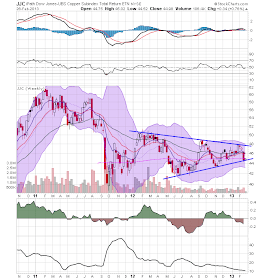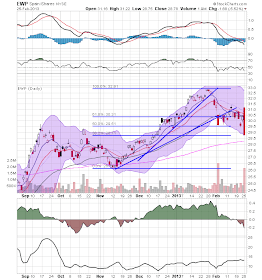- by New Deal democrat
In the rear view mirror, 4th quarter 2012 GDP was revised from slighly negative to slightly positive. Monthly data for January included a variety of housing data. New home sales and pending home sales were both up. The Case-Shiller index increasd again to its best YoY increase since 2006. Construction spending declined due to nonrsidential building. Residential construction was flat. Manufacturing as measured by both the ISM and the Chicago PMI both had their best months in over half a year. Core durable goods continued to rise and are now positive YoY, although the total index declined. Vehicle sales were up, but failed to surpass their November peak. Both the University of Michigan and Conference Board measures of consumer confidence both rose, but mainly due to present conditions. Expectations for the future, while up, are still very low. Personal income, as expected, declined sharply, but personal spending was up, as the savings rate declined to a new post-recession low.
Let me remind readers that this look at high frequency weekly data is not predictive, but attempts to capture the most up to the minute pulse of the economy in the present. As I've done for the last few weeks, due to the recent payroll tax increases, let's start again this look at the high frequency weekly indicators by checking what is happening with tax withholding:
Employment metrics
Daily Treasury Statement tax withholding
- 164.0 B unadjusted was withheld this year in February compared with $158.3 B a year ago, a 1.4% increase
- $146.8 B (adjusted for 2013 payroll tax withholding changes) vs. $154.1 B, -4.7% YoY for the last 20 days. The unadjusted result was $168.9 B for a 9.6% increase.
- 344,000 down 18,000
- 4 week average 355,000 down 6,750
- unchanged at 89 w/w up 3.3% YoY
I am adjusting my YoY tax withholding figures to reflect the increase in personal withholding taxes. While the YoY collections are up substantially, they should be up over 15% to compensate for the tax increase. Since I can think of no reason why employment itself should have fallen off a cliff in January, it is very possible that there is a lag in the payment of withholding taxes with the new increase. If this hypothesis were correct, I would have expected tax withholding to be much more reliable by about now. So far, that isn't happening.
Consumer spending
- ICSC +0.1% w/w +2.9% YoY
- Johnson Redbook +2.7%YoY
- Gallup daily consumer spending 14 day average at $80 up $15 YoY
Housing metrics
Housing prices
- YoY this week. +3.7%
Real estate loans, from the FRB H8 report:
- -0.2% w.w
- +0.7% YoY
- +2.2% from its bottom
Mortgage applications
- -5% w/w purchase applications
- +14% YoY purchase applications
- -3% w/w refinance applications
Interest rates and credit spreads
- 4.87% BAA corporate bonds up 0.01%
- 2.00% 10 year treasury bonds down -0.01%
- 2.87% credit spread between corporates and treasuries incrreased +0.02%
Money supply
M1
- -0.9% w/w
- -0.2% m/m
- +9.8% YoY Real M1
M2
- -0.2% w/w
- +0.1% m/m
- +5.3% YoY Real M2
Oil prices and usage
- Oil $90.68 down $2.45 w/w
- gas $3.78 up $0.03 w/w
- Usage 4 week average YoY +2.0%
Transport
Railroad transport
- -3400 or -1.2% carloads YoY
- +1700 or +1.0% carloads ex-coal
- +23,600 or +11.0% intermodal units
- +20,300 or +4.1% YoY total loads
- Harpex unchanged at 372
- Baltic Dry Index up 36 to 776
Bank lending rates
- 0.18 TED spread down -0.01 w/w
- 0.2000 LIBOR unchanged w/w
JoC ECRI Commodity prices
- down 1.52 to 127.61 w/w
- -0.41% YoY
Once again, by far the most negative data was tax withholdings adjusted for the payroll tax increase. Housing loans and mortgage applications were positive but less so. Temporary staffing is neutral. Credit spreads are neutral. Commodities have weakened. M2 money supply has declined since the first of the year.
Continuing positives once again include housing prices and mortgage applications, and surprisingly consumer spending. Bank lending rates were positive. Gas usage has turned positive, and Oil prices are more accomodating. Initial claims are very positive. Rail traffic is also positive again ex-coal.
There are very few indicators that are outright negative -- commodities, coal hauling, and tax withholding adjusted for increased rates. Still, many of the others are less positive than they used to be, and are close to neutral. Ironically, consumer spending this week was among the most positive of metrics. This makes me more cautious than at any time since last summer.
Have a nice weekend.


















































